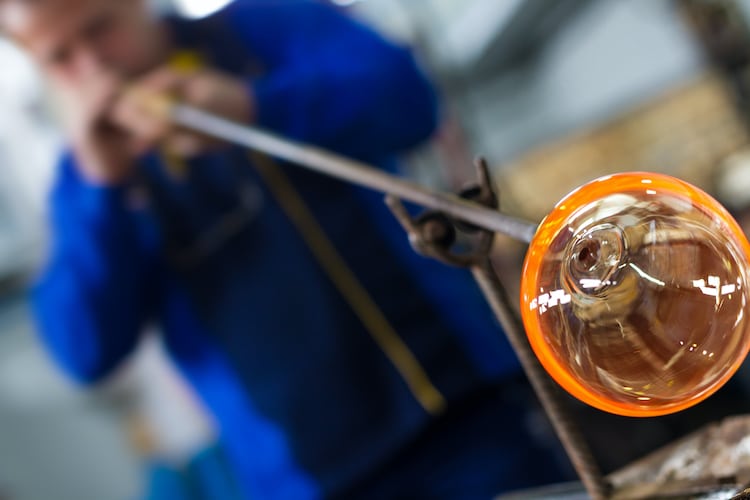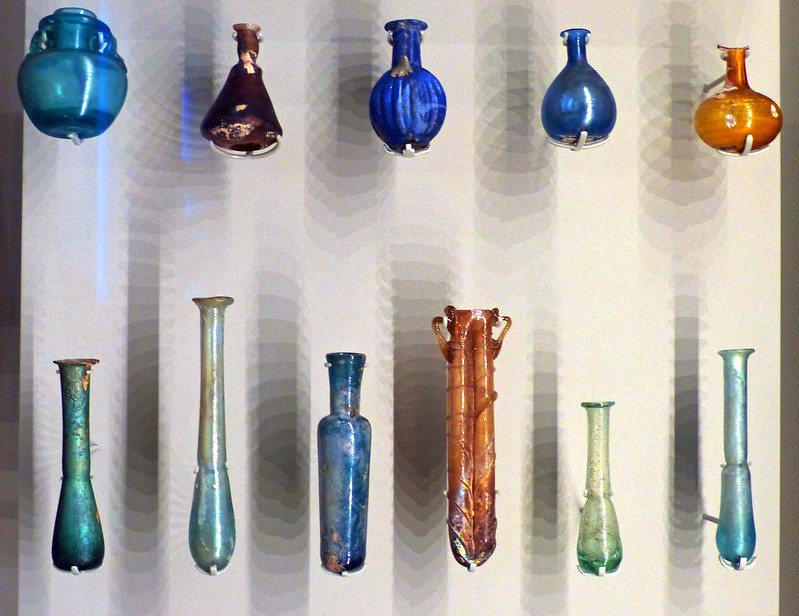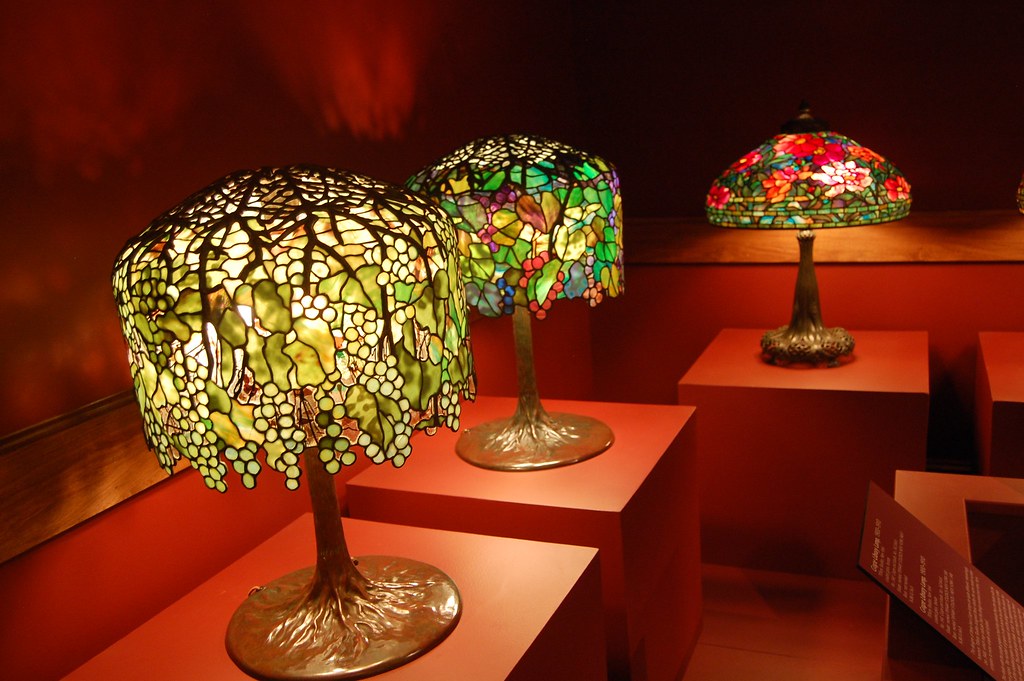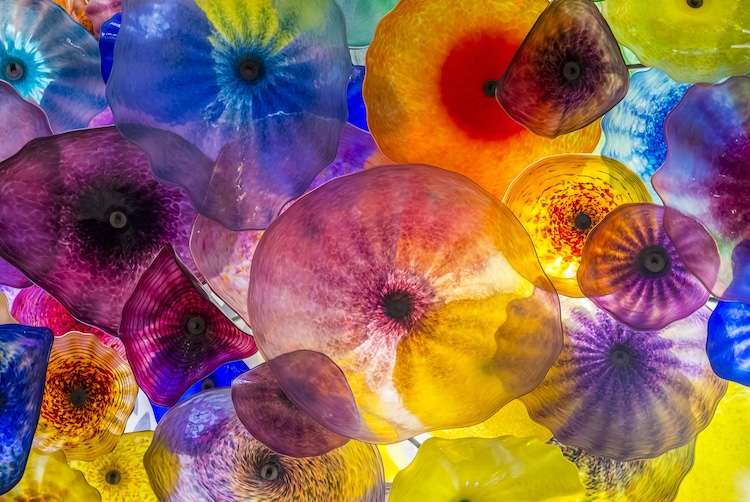This is done through the art of glassblowing.
The practice involves shaping the material using heat and, as the term implies, blowing.
Air is then blown through that pipe and the pliable glass blooms into a bubble form.

Photo:Stock Photosfrom Stefan Malloch /Shutterstock
From there, its shaped by swinging, rolling, or blowing.
The hardened material was used in making tools, arrowheads, and amulets.
After the glass cooled, the cores were removed to reveal a hollow form.

Photo:Stock Photosfrom maggee /Shutterstock
In addition to making bowls, glass tiles were also created at this time.
Around300 BCE, they created the tool for which modern glassblowing is built upon.
The Italian government then forced all of the glassblowers toMurano islandaround1300 CE.

Roman blown glass at the Victoria and Albert Museum in London
There, they perfected their craft and developedcristalo, a clear glass.
They also produced new colors.
It was a huge risk for glass blowers to leave Muranothe act was punishable by death.

Louis Comfort Tiffany lamps
But many succeeded in escaping and took their techniques to other parts of Europe and Asia.
In the17th century, you could get a textbook on the subject calledArte VetrariaorThe Art of Glass.
In doing so, the techniques and approaches used in glassblowing have been both refined and new ones invented.

Stock Photosfrom Kobby Dagan /Shutterstock
Contemporary Glassblowing Artists You Should Know
Want to learn more about contemporary glassblowing?
Here are artists whose amazing works blow us away.
The internationally renowned glassblower changed the way we think about glass art.
Once those are formed, fire and heat wrap them around blown figures.
The pieces feature a striped Venetian technique popular in glasswork.
Using the same material that scientific beakers and baking dishes are made of, they form delicate iridescent bubbles.
This, however, is precisely what influencesAustin Sternin his glasswork.
My current work explores interpersonal relationships, and mental health.